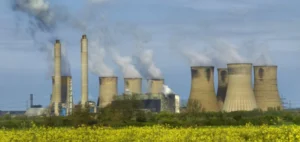German energy giant RWE, long one of Europe’s biggest emitters of CO2, announced Tuesday that it will stop coal-fired power generation by 2030 in the coal basin
Rhine, advancing his plans by eight years.
“We will end lignite power generation in 2030, which is twice as fast as planned,” RWE boss Markus Krebber said at a press conference.
The decision comes as Olaf Scholz’s government, which claims to be at the forefront of Europe’s energy transition, has been forced to temporarily extend the operation of several coal-fired power plants to deal with the energy crisis triggered by Russia’s invasion of Ukraine.
The continued operation of several plants until the spring of 2024 does not affect the coalition’s goal of moving away from coal by 2030.
The announcement on Tuesday by RWE, Germany’s largest electricity producer, is intended to embody the will of the social-democratic chancellor, who governs with ecologists and liberals, to keep to the timetable.
The energy crisis, linked to the drying up of Russian gas which is causing prices to soar, “focuses all our attention”, but “the structural crisis of our time (…) is certainly global warming”, Mr. Habeck insisted.
Specifically, three coal-fired power plants with a capacity of 1,000 MWh each will be shut down by the end of the decade in North Rhine-Westphalia (NRW), a region in the west of the country regularly targeted by environmental activists against the expansion of giant open-pit coal mines.
This will save 280 million tons of CO2, said the Green Minister of Economy, Robert Habeck, at the press conference.
In this respect, the inhabitants of Lützerath, a community in the Rhine mining area that has long been condemned to disappear in order to allow the nearby Gazrweiler open-pit mine to expand, will finally be able to keep their homes, said Nona Neubaur, Minister of Economic Affairs for the RNW region.
In the meantime, RWE’s power plants will help to ensure the security of electricity supply for Europe’s largest economy, which until now has been heavily dependent on Russian gas.
Two of RWE’s lignite-fired power plants, each with a capacity of 600 megawatts, will remain in operation until 2024, although they were originally scheduled to cease operation at the end of 2022.
“The faster exit from coal can succeed … if we have a massive expansion of renewable grids,” added Krebber, whose group, which ranked as one of Europe’s biggest polluters in recent years, has shifted to clean energy sources.
RWE wants to invest more than 50 billion euros worldwide by 2030 to accelerate the energy transition.
Some 15 billion euros of investment are planned for Germany, the group explained.






















